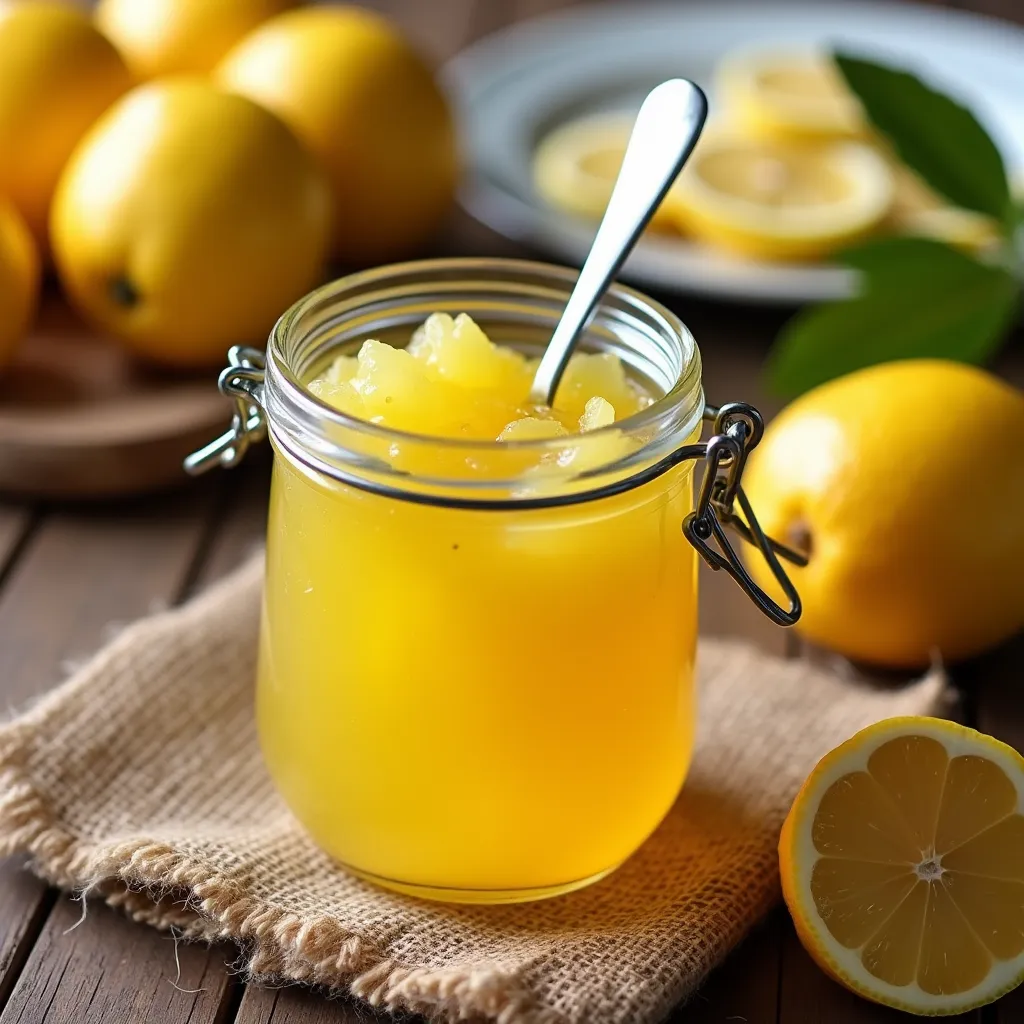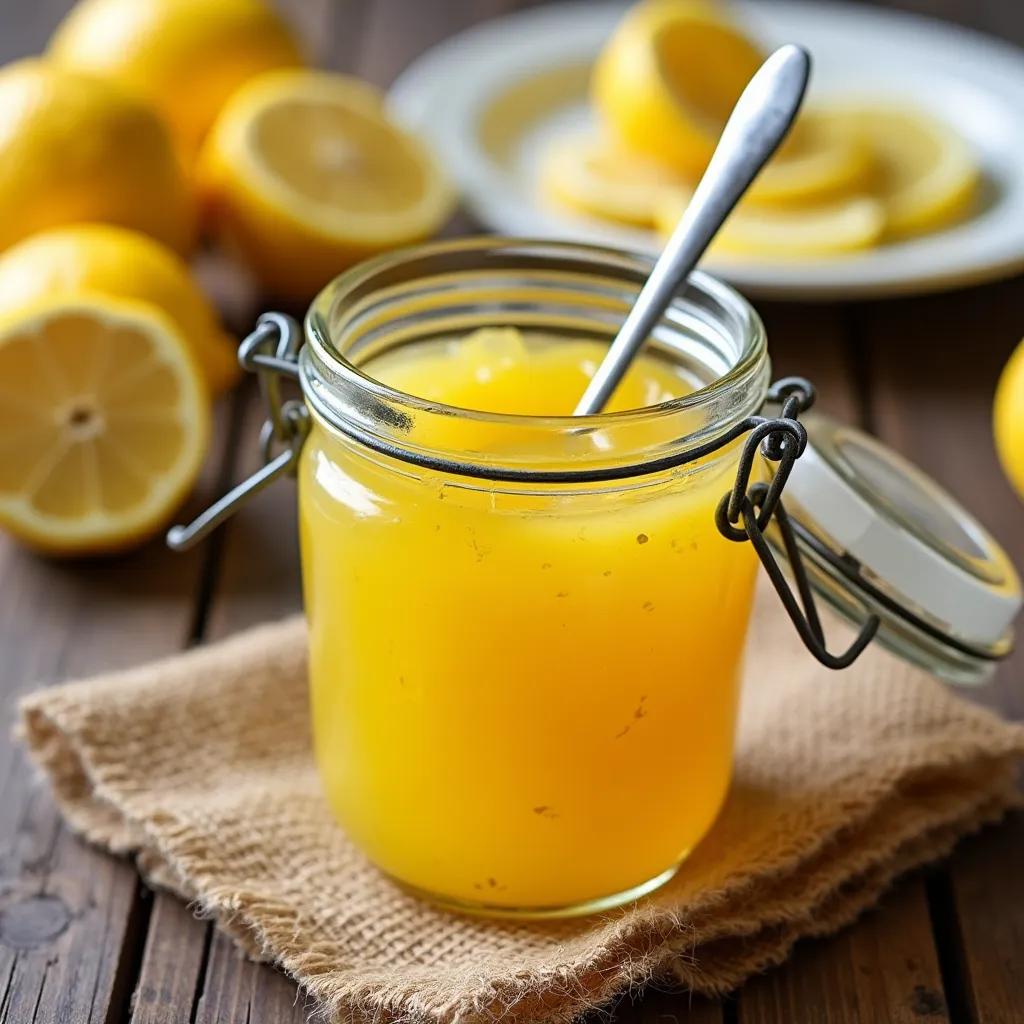 pin it
pin it
I first encountered this Italian Lemon Jam recipe while traveling through Sicily, where I stayed at an agriturismo surrounded by lemon groves. The owner, an elderly woman named Sophia, made this jam every morning and served it with fresh bread and ricotta cheese. I was immediately struck by how different it was from the overly sweet, store-bought varieties I was used to. The balance of tangy lemon with just enough sweetness was perfect, and the visible bits of zest gave it a wonderful texture. When I returned home, I was determined to recreate it. After several attempts, I finally captured that authentic flavor that transported me right back to that sunny kitchen in Sicily. The key, I discovered, was using the freshest lemons possible and not overcooking the jam to preserve that bright, fresh flavor.
Why I love this recipe
I love this Italian Lemon Jam recipe because it embodies simplicity and quality - the cornerstone principles of Italian cooking. With just a handful of ingredients, it creates something truly spectacular. The process itself is meditative; the rhythmic zesting and juicing of lemons, the gradual melting of sugar, and watching the mixture transform into liquid gold. But what I appreciate most is how versatile this jam is. It brightens up my morning toast, elevates a simple dessert to something special, and makes for heartfelt homemade gifts that friends and family always treasure. There's something magical about preserving seasonal abundance, capturing sunshine in a jar to enjoy throughout the year. Each time I open a jar in the depths of winter, that burst of citrus aroma instantly lifts my spirits and reminds me that spring will come again.
What You Need From Your Kitchen
- Lemons: Use unwaxed, preferably organic lemons for the best flavor and to ensure no chemical residue in your jam.
- Sugar: Granulated white sugar works best, but you can experiment with raw sugar for a deeper flavor.
- Vanilla bean: Optional but adds a wonderful warm note that complements the bright lemon flavor.
- Lemon zest: Be sure to only zest the yellow part of the skin, as the white pith is bitter.
- Water: Helps dissolve the sugar and create the right consistency.
Let's Make These Together
- Prepare the lemons
- Start by washing your lemons thoroughly under warm water to remove any wax or residues. Using a microplane or zester, carefully remove the yellow zest from two lemons, avoiding the bitter white pith beneath. Then cut all lemons in half and extract the juice, straining out any seeds.
- Create the base mixture
- In a large, heavy-bottomed pot, combine the fresh lemon juice, reserved zest, sugar, water, and salt. If you're using the vanilla bean for added depth, split it lengthwise and add it to the pot as well. Stir gently to begin dissolving the sugar.
- Cook to perfection
- Place your pot over medium heat and bring the mixture to a boil, stirring constantly until all the sugar has completely dissolved. Once boiling, reduce the heat to medium-low and allow the mixture to simmer for approximately 30-35 minutes. Stir occasionally to prevent sticking and watch as the mixture gradually thickens and takes on a glossy appearance.
- Test for doneness
- To check if your jam has reached the perfect consistency, place a small plate in the freezer for about 5 minutes. Drop a teaspoon of hot jam onto the cold plate and wait for 30 seconds. Push the jam gently with your finger - if it wrinkles and holds its shape, it's ready. If it's still too runny, continue cooking for another 5-10 minutes and test again.
- Jar and preserve
- While your jam is cooking, prepare your jars by sterilizing them in boiling water or running them through a dishwasher on high heat. When the jam reaches the perfect consistency, carefully ladle it into the hot sterilized jars, leaving about 1/4 inch of headspace. Wipe the rims clean with a damp paper towel, then secure the lids tightly.
 pin it
pin it
Switch Things Up
The first time I made this Italian Lemon Jam, I was overwhelmed by the intense fragrance that filled my kitchen. I'd picked up some gorgeous Meyer lemons at the farmers market and decided to try this traditional recipe. I ended up adding a split vanilla bean during cooking, which gave it a subtle warm undertone that complemented the bright lemon flavor beautifully. Now I make a double batch every winter when lemons are at their peak - half for my family and half for gifts. Everyone always asks for the recipe!
Perfect Pairings
This Italian Lemon Jam pairs wonderfully with fresh ricotta on toasted brioche for a traditional Italian breakfast. Try it swirled into plain Greek yogurt with a sprinkle of granola for a bright morning treat. It makes an elegant filling for layer cakes or as a topping for panna cotta. For a savory application, add a small spoonful to a cheese board alongside mild cheeses like brie or mascarpone. It even works as a glaze for roasted chicken or fish, adding a sweet-tart dimension to savory dishes.
 pin it
pin it
Frequently Asked Questions
- → Can I use regular lemons instead of Italian lemons?
Yes, you can use any variety of lemons for this recipe. Italian lemons (like Sorrento or Amalfi lemons) are traditionally used because they're especially fragrant and juicy, but standard lemons will work perfectly fine. Meyer lemons make an excellent substitute as they have a sweeter, less acidic flavor profile.
- → How long will this lemon jam keep?
When properly sealed in sterilized jars, this Italian Lemon Jam can be stored in a cool, dark place for up to 6 months. Once opened, keep refrigerated and use within 3-4 weeks for the best flavor. If you process the jars in a water bath canner, the unopened jam can last up to a year.
- → Is it possible to reduce the sugar in this recipe?
While you can reduce the sugar somewhat, I don't recommend going below 3 cups for this recipe. Sugar acts as a preservative and helps achieve the proper set. If you significantly reduce it, the jam may not gel properly and will have a shorter shelf life. For a less sweet version, you could try a low-sugar pectin specifically designed for reduced-sugar preserves.
- → Why did my jam turn out runny?
Runny jam typically occurs when it hasn't reached the proper temperature (220°F/104°C at sea level) or wasn't cooked long enough. Lemons are naturally high in pectin, so this jam usually sets well, but factors like very ripe lemons (which have less pectin) or not cooking long enough can affect consistency. Try cooking it longer or adding 1-2 tablespoons of commercial pectin if you're having trouble getting it to set.
- → Can I add other flavors to this lemon jam?
Absolutely! This recipe makes a wonderful base for experimentation. Popular additions include fresh herbs like rosemary or thyme (add a sprig during cooking and remove before jarring), ginger (add 1-2 tablespoons of finely grated fresh ginger), or other citrus like orange or lime. You could also add a splash of limoncello at the end of cooking for an extra Italian touch.
Conclusion
This Italian Lemon Jam captures the essence of sun-ripened lemons in a jar. With its vibrant color and perfect balance of sweetness and acidity, it brings a refreshing brightness to breakfast tables and desserts alike. The tiny bits of zest add texture and intensify the citrus flavor, making each spoonful a delightful experience. Store in a cool place and enjoy within 6 months for the best flavor.
